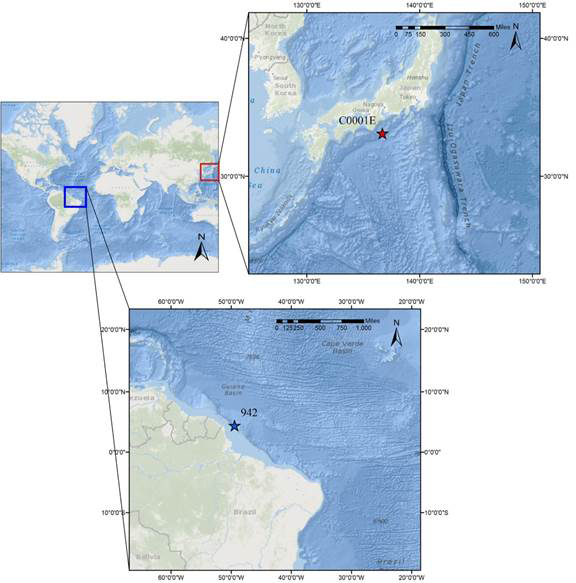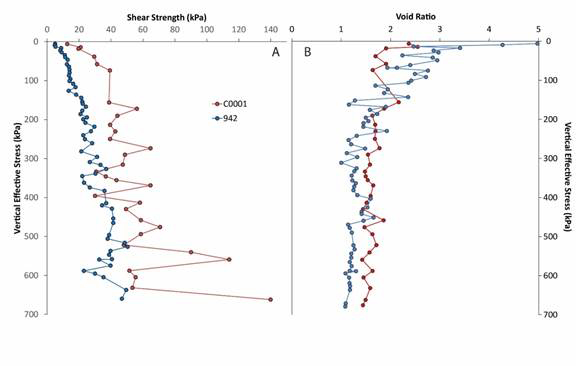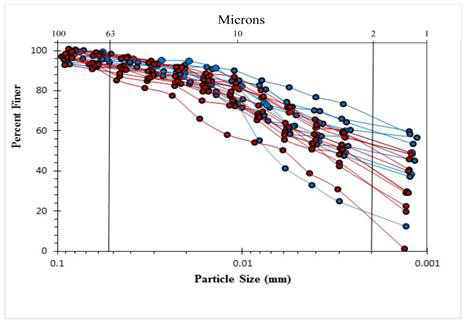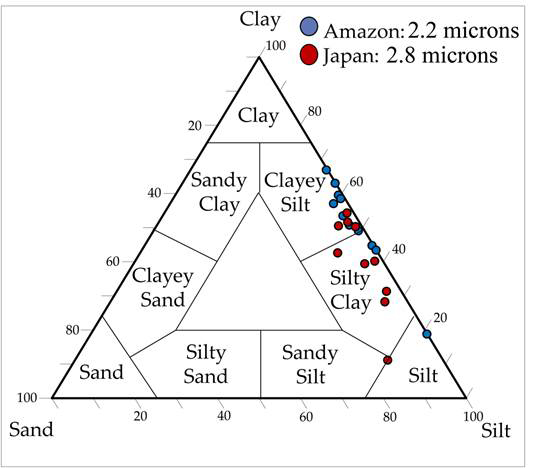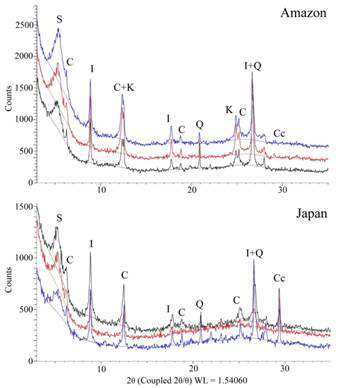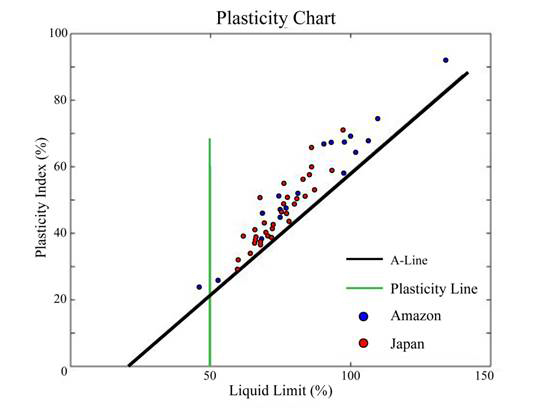Reports: DNI856247-DNI8: Seismicity-Enchanced Compaction in Deepwater Fine-Grained Sediments
Derek Sawyer, PhD, Ohio State University
EXECUTIVE SUMMARY
The report describes the progress during grant period 1 (09/01/2016 to 8/31/2017). The project objectives are to understand the influence of seismic energy generated by earthquakes on the compaction of fine-grained seafloor sediments. These objectives are to be achieved by a 2-part laboratory analysis of direct measurements on marine sediments within the first 100 meters below seafloor. This interval (0-100 meters below seafloor) is critical because it is where mudrocks inherit their fabric and compaction properties that influence their mechanical behavior throughout the rock cycle, including impacts on how they respond to hydraulic fracturing, for example. In addition, this interval is important because it is where nearly all underwater landslides originate within and the compaction properties dictate the dynamic response of the submarine landslide and how hazardous or not, the failure event is. Therefore, this project has direct relevance to the petroleum industry, has practical hazard assessments relevance, and has broad scientific value. The sediments for this study are from four representative locations that have been previously collected by the Ocean Drilling Program, therefore, no field work is required for this project. Two locations exists on passive margins (no seismic energy) while two sites are located on active margins (seismically active). In part 1 of the project, the measurements to be made are grain size distributions, mineralogy, and Atterberg limits. In part 2, the void-index method will be applied to the measured data that will recast the data in terms of intrinsic compression lines. The void-index method is critical because it normalizes for differences in lithology, mineralogy, and other site-by-site variations. Once these compression lines are generated, they will be directly comparable to each other. The hypothesis is that the passive margin sites will follow the expected theoretical compression line while the active margin sites will deviate from the theoretical compression line. If such a deviation is observed, it would lend support to the hypothesis that earthquakes progressively dewater sediment in situ, a process referred to as seismic strengthening. During this grant period, the project has supported a graduate student to successfully complete all of Part 1 and make initial progress on Part 2. This has directly resulted in a scientific journal article, a conference paper, and 2 professional presentations.
TECHNICAL REPORT
Grain Size Analysis
The average D50 for Site C0001 is 2.8 μm, while Site 942 has an average D50 of 2.2 μm. Average sand/silt/clay ratios from Japan and Amazon are 5.1/55.0/39.9 and 1.1/47.5/51.4, respectively. Figures 3 and 4 illustrates how both sites consist of silty-clay to clayey-silts, with Amazon consisting of dominantly clayey-silt and Japan consisting of more silty-clay.
X-Ray Diffraction
As seen in Figure 5, both sites contain chlorite, illite, smectite, calcite, and quartz. The presence of these minerals at either site is not surprising due to the provenance of the sediments, Japan being an active volcanic arc and Amazon constituents are tropical weathering products.
Atterberg Limits
A suite of samples was tested from both sites for Atterberg analysis. As can be seen in Figure 6, all but 1 sample lie just above the “A-line” and have liquid limits above 50. This indicates that the sediments within 100 mbsf of the seafloor at both sites are characterized as highly plastic. As can be seen by the distribution of data points in Figure 6, Amazon samples can be characterized as slightly more plastic than Japan.
Japan has an average liquid limit of 75 and an average plastic limit of 29, resulting in a plasticity index of 46. Amazon has an average liquid limit of 85 and an average plastic limit of 30, resulting in a plasticity index of 55. Both sites have similar water contents at which they begin to behave as a non-plastic (plastic limit), however, Amazon is able to retain more water within its mass while still behaving like a plastic as evident by the slightly higher liquid limit.
Figure 1: Location of scientific ocean drilling sites used in this study. ODP Site 942 (blue star) is located near the furthest northwestern extent of the Amazon Fan, ~190 km offshore Brazil. IODPI Site C0001 (red star) is located just below the peak of the Kumano Ridge, ~90 km southeast of Japan.
Figure 2: (a) Shear strength and (b) void ratio versus vertical effective stress for Sites C0001 (red) and 942 (blue). As can be seen here, void ratio reduction can only account for enhanced shear strength in the upper ~100 kPa (~ 20 mbsf). Following which, Site C0001 (active) exhibits higher void ratio values whilst maintaining enhanced shear strength. Seeing as these sediments may have different physical and mineralogical characteristics, further analysis of their normal consolidation behavior may shed light on the natural or intrinsic void ratio reduction with depth at each site.
Figure 3: Composite graph of all grain size measurements. Vertical lines represent the sand/silt grain size boundary (63 microns) and the silt/clay grain size boundary (2 microns). Grain size distributions for both sites are very similar throughout the depth of interest.
Figure 4: Ternary diagram. The average grain sizes for Japan and Amazon are 2.8 microns and 2.2 microns, respectively.
Figure 5: X-ray diffraction scans show that both sites contain smectite (S), illite (I), chlorite (C), Calcite (Cc), and quartz (Q).
Figure 6: Plasticity chart showing the distribution of Amazon (blue) and Japan (red) samples following Atterberg limit testing. Both sites have a broad distribution of sediments that exhibit the behavior of high plasticity clays, although one sample from Amazon is a characteristically low plasticity clay. All data points have liquid limit standard deviations of 0.7 percentage points and plasticity index standard deviations of 0.8 percentage points. This data suggests that it is appropriate to utilize the regression formulas for solving for the intrinsic constants of the void index (Burland, 1990) for Part 2, grant period 2.

